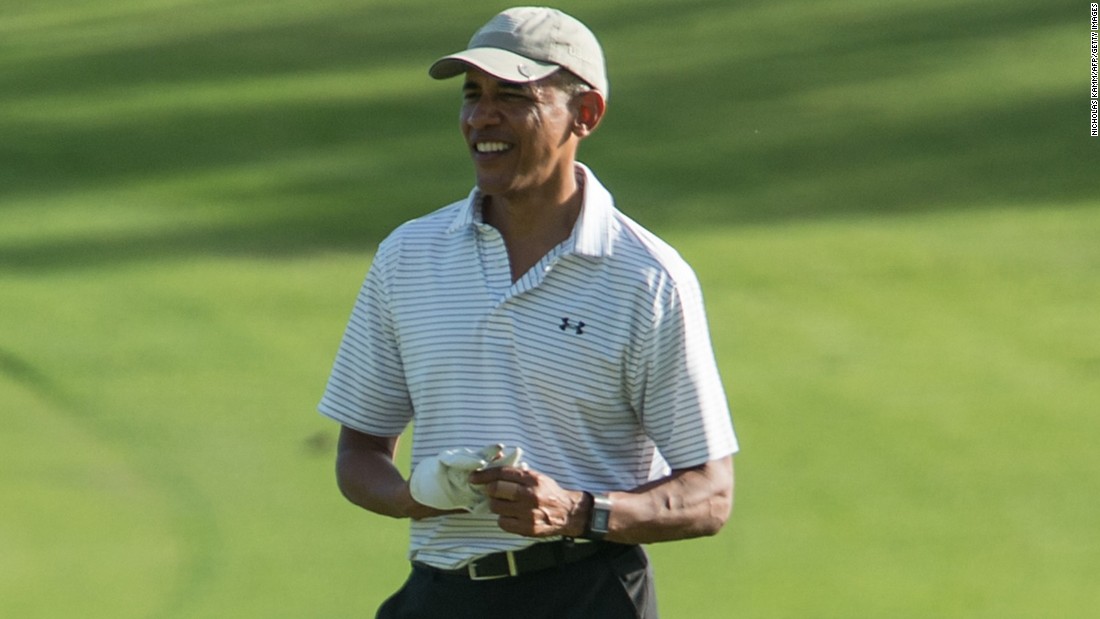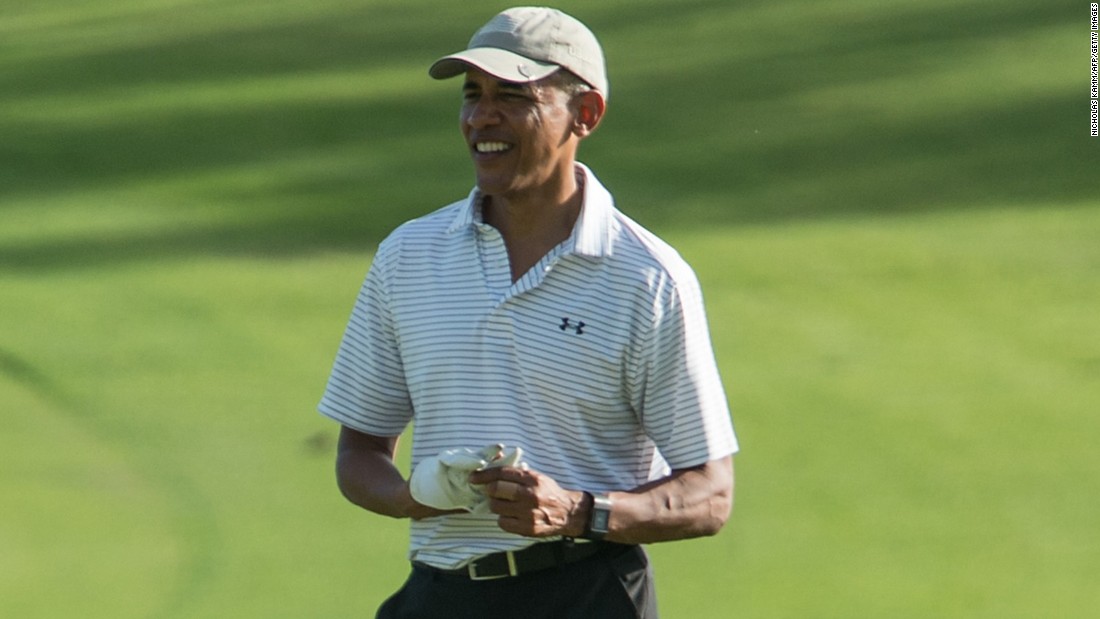Island life suits Obama and Trump, but at a different pace

Palm Beach, Florida (CNN)As they each luxuriate on islands at the left and right edges of the country, President Barack Obama and his successor, Donald Trump, are finding they have decidedly different ideas of a good time.
The outgoing President prefers early mornings at the gym and late nights in upscale Asian bistros. The incoming one remains closer to home, partial to a wedge salad named for himself eaten in the Italianate splendor of his own private club.
While Obama seeks to put as much distance as he can — physically and mentally — between himself and Washington, Trump tracks political news by the minute, tweeting terse responses from his southern outpost.
In Hawaii, Obama favors the company of friends he’s known long enough they don’t call him “Mr. President.” For Trump, the designation can’t come soon enough: the nameplate at his Christmas dinner place setting bore his soon-to-be title.
Settling into a second week of vacation, both the President and the President-elect have surrounded themselves with family and friends in palm-shaded paradise. But there’s little similarity in what each is seeking from his island getaway.
Holidays in Hawaii have always marked an escape for Obama from the White House to the life and people he knew before he became famous. Mar-a-Lago, where Trump has holed up, is less a nostalgic reminder of a simpler time and more a testament to the lifestyle his notoriety affords.
Trump has emerged only briefly from his fortified Florida compound since he arrived, once to play golf with Tiger Woods and again to attend Christmas Eve church services. Obama, meanwhile, has played four rounds of golf in Hawaii, each with the same group of high school friends he’s known for decades.
“My best friends from high school don’t operate any differently with me now than they did when I was (younger),” Obama told his former adviser and CNN commentator David Axelrod in an interview for his CNN podcast. “One gift I do seem to have is getting really, really good friends around me who’ve got my back. And that gives you a certain serenity in the midst of a lot of foolishness.”
In Palm Beach, where Trump has decamped, the foolishness doesn’t seem quite as far away. While he’s been here, the President-elect has maintained a steady stream of tweets about the UN Security Council’s vote on Israel and other political matters. A message posted on Monday about Obama’s interview with Axelrod suggested the televisions at Mar-a-Lago are still tuned to cable news, where the story got heavy play.
Like Obama, Trump surrounds himself with friends. But instead of pals from childhood, his circle consists of Palm Beach’s wealthy denizens, many of whom pay steeply to join his private club. Those friends say that’s where Trump feels most himself, encircled by a rotating assortment of children, grandchildren and members.
“He’s surrounded by people he likes and knows and trusts, and he’s in a different bubble,” said Robin Bernstein, one of Mar-a-Lago’s original members who said she has spoken to Trump nearly every day of his presidential vacation this month. “Most of the people in and around the clubs are people who have known him for years.”
“He seems relaxed and happy, joking, playing golf,” Bernstein said. “He just seems genuinely happy to be in a place where he feels comfortable.”
For Trump, that hasn’t meant an escape from work. On Tuesday, he resumed high-level staff meetings to plan his new administration. He’s also set to interview candidates for remaining Cabinet posts, including the Agriculture and Veterans Affairs secretaries.
While the White House says Obama receives his classified intelligence briefing every day in Hawaii, there’s little by way of work unless something drastic happens somewhere in the world (and usually, something does). Obama met with Japanese Prime Minister Shinzo Abe Tuesday and toured Pearl Harbor, but previous displays of vacation diplomacy have been rare.
This year, Obama added a new activity to his normal routine of golf, hiking, shaved ice and dining out: a “breakout” strategy simulation game with his daughters and their friends.
He’s never stopped by any of his boyhood homes, most of which offer few hints at their famous former resident, or the Punahou School, where he famously established the “choom gang” of pot enthusiasts during his teenage years.
Oahu, like Obama, has grown richer since those days. At night, the President and first lady are often spotted in the island’s ritziest dining rooms: Nobu, Morimoto, and Alan Wong’s.
On that front, Honolulu and Palm Beach can feel similar. Both have tony shopping streets, although they cater to vastly different clienteles. The designer boutiques in Waikiki sprang up as a destination for the tens of thousands of Japanese tourists who visit yearly; in Palm Beach, the shops along Worth Avenue were built as a draw for the old-money families who have wintered here for a century.
It’s the Worth Avenue set that Trump has been welcoming to Mar-a-Lago since he acquired the historic property in 1985. Due-paying members can still enjoy an up-close view of the incoming President, who still mingles and takes photo with guests.
Life continues apace at the club, which costs $100,000 to join and offers a swimming pool, spa, a croquet green and bridge lessons. Members say that aside from the boosted security outside Mar-a-Lago’s gates, the life of poolside lunches under canary-yellow cabanas is largely unchanged.
On Christmas Eve, a long line of Jaguars, Maseratis and Mercedes-Benz snaked down South Ocean Boulevard, waiting to be sniffed by a dog and scanned by Secret Service officers before entering the gated compound. The club hosted the same massive holiday dinners for members as in years past, complete with Trump’s Wedge Salad, Colossal Crab Cocktail and traditional turkey dinner on the menu.
This year, guests looking for a handshake with the owner faced a retinue of Secret Service a step away. Trump’s friends say they provide another type of protection, one meant to shield the billionaire from the onslaught of political arrows aimed his direction.
“He can relax here,” Bernstein said. “We’re here to protect him as much as we can.”
Read more: http://www.cnn.com/2016/12/29/politics/obama-donald-trump-vacation/index.html
